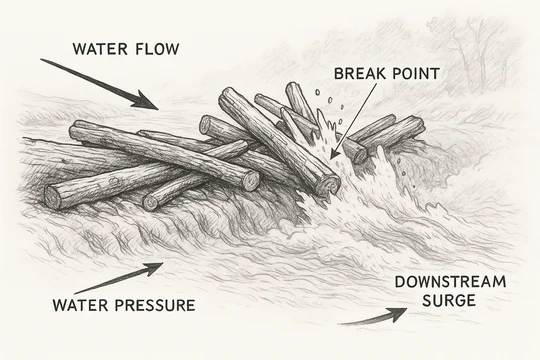
We've talked a lot about Judge Connolly's April 2022 standing orders on disclosure statements and litigation funding, including earlier this month when Judge Connolly stayed an action after a plaintiff failed to fully comply with those orders.
(Plaintiff in that action, by the way, filed an updated disclosure statement claiming it has no knowledge to disclose—we'll have to see how the Court responds to that).
Yesterday, it happened again, but it was triggered in part by a well-written filing by a defendant. In Longbeam Technologies LLC v. Amazon.com, Inc., C.A. No. 21-1559-CFC (D. Del.), the Court put an order on the docket in May for the parties to comply with its standing orders:
ORAL ORDER: The parties are directed to certify within five days that they have complied with Chief Judge Connolly's April 18, 2022 Standing Order Regarding Disclosure Statements Required by Federal Rule of Civil Procedure 7.1. The parties are also reminded of their obligation to comply with Chief Judge Connolly's April 18, 2022 Standing Order Regarding Third-Party Funding Arrangements. Ordered by Judge Colm F. Connolly on 5/13/2022. (nmf) (Entered: 05/13/2022)
In response, plaintiff filed an updated Rule 7.1 statement but, as far as I can tell, no litigation funding disclosure. Oddly, the updated Rule 7.1 statement identified the LLC itself, as well as a single individual, without making the relationship clear.
Then, the Court held a hearing on a § 101 motion to dismiss, at which I understand the Court raised plaintiff's disclosure statement, and asked whether the defendant had objected. The Court then ordered plaintiff to supplement its 7.1 disclosure and file a certification from a party regarding litigation funding, within a week.
After the hearing, plaintiff filed an "amended" litigation funding disclosure statement, which read in part:
Longbeam has not entered into any funding arrangement or agreement for the payment of attorneys’ fees in this case other than, to the extent applicable, its retainer agreement with outside counsel of record, Daignault Iyer LLP. Longbeam has engaged Daignault Iyer LLP on a contingency basis that compensates the firm based on the success of the litigation without any upfront payment of fees or expenses. . . . Longbeam has the sole right to make litigation and settlement decisions in this action and does not require the approval of its counsel or any third party to make litigation or settlement decisions in this case.
Plaintiff, an LLC, also filed an updated Rule 7.1 disclosure statement, identifying a single member and no other interests.
The defendant responded by filing an "objection" to plaintiff's disclosure statements. The objections argued that plaintiff may have an issue with standing because news reports and PTO filings indicate that plaintiff is an IP Edge entity, despite what its disclosures said:
Defendants Amazon.com, Inc. and Amazon Web Services, Inc. (collectively “Amazon”) object to Plaintiff Longbeam Technologies LLC’s (“Longbeam”) Amended Disclosure Statement (D.I. 30) and Amended Statement Regarding Third-Party Funding (D.I. 31) for their failure to disclose Longbeam’s apparent relationship with patent monetization entity IP Edge.
Longbeam’s disclosures make no mention of IP Edge, but its own administrative filings, as well as public reporting, confirm that Longbeam is an extension of IP Edge. Longbeam’s patent assignment, excerpted and recorded with the United States Patent and Trademark Office, confirms that the correspondence address for Longbeam is an “@ip-edge.com” email address. . . . Independent news reports have confirmed that “IP Edge has continued to form additional entities . . . among them . . . Longbeam Technologies LLC” . . . and that this litigation specifically represents “a brand-new campaign run by IP Edge” . . . .
Smart! Defendant argued out that IP edge has previously taken steps to hide its interests:
Longbeam’s failure to disclose its connection to IP Edge is concerning, given IP Edge’s established practice of “the naming of individuals, seemingly with no prior connection to monetization, as managers or members of its various LLCs” to avoid disclosure of its real interests, in defiance of the purpose of this Court’s standing disclosure orders. Ex. E at 2 (discussing the specific impact of the Court’s new standing orders on IP Edge entities). As the Court noted, this structure prevents Amazon from having any understanding of who is actually suing it, and who is making strategic litigation decisions for Longbeam. Hr’g Tr. at 3:19-5:23; 33:11-19 (July 13, 2022).
Defendant also argued that it needs this information to determine standing:
Longbeam’s obfuscation prevents Amazon from meaningfully assessing whether Longbeam has standing to bring this action. Without any disclosure of the relationship between IP Edge and Longbeam, Amazon cannot evaluate whether Longbeam possesses the full bundle of exclusionary rights necessary to establish prudential or constitutional standing. See, e.g., Acceleration Bay LLC v. Activision Blizzard, Inc., 2016 WL 3186890, at *5 (D. Del. June 3, 2016) (dismissing case for lack of standing due to substantial rights held by non-party).
Finally, it requested a stay of other discovery pending discovery on standing:
To resolve this dispute, Amazon respectfully requests that the Court order early discovery limited to this threshold issue of standing, including the production of relevant documents and a deposition of Longbeam principals on the nature and extent of IP Edge’s interests in this litigation and the asserted patents, while staying discovery on other issues.
It worked. The Court permitted discovery on standing issues—and, in particular, the IP Edge issues—and stayed discovery otherwise:
ORAL ORDER: Having reviewed the parties' filings with respect to Longbeam's Rule 7.1 disclosure statements and its statements regarding third-party funding, I have concerns about Longbeam's standing to pursue this action and whether it has complied with the Court's standing order regarding third-party litigation funding arrangements. Accordingly, I will grant Amazon's request to conduct threshold discovery on these matters and will STAY the case in all other respects. Such threshold discovery may include, but is not necessarily limited to, documents and testimony from Longbeam's principals relevant to the issues of standing and third-party litigation funding, including the nature and extent of IP Edge's interests in this litigation and the asserted patents. Case stayed.
Longbeam Technologies LLC v. Amazon.com, Inc., C.A. No. 21-1559-CFC (D. Del. Aug. 17, 2022) (oral order).
So, defendants, keep in mind that "objections" to plaintiff's litigation funding disclosure may be another tool in your toolbox in Judge Connolly cases brought by these sorts of non-practicing entities.
If you enjoyed this post, consider subscribing to receive free e-mail updates about new posts.




